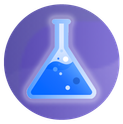Community resources
Community resources
Community resources
- Community
- Q&A
- Confluence
- Articles
- Step 2: Form a Collaboratory Hypothesis
Step 2: Form a Collaboratory Hypothesis
Hello Collaboratory Scientists!
Welcome to Collaboratory Month 🧬
The second step in the Collaboratory method is to form a hypothesis. A hypothesis is a possible explanation to a question. (If you haven't already, formulate a question on the Step 1 post). Remember, your hypothesis must be testable and measurable.
Example: Perhaps, you want to test an experiment about whether having more meetings results in more efficient collaboration.
A good question to begin with might be: ”Does having more meetings result in a project being finished more quickly?"
A good hypothesis might be: If we decrease time spent meeting by 25%, the project will still be finished in the same time.
Remember - this experiment is all about finding the most efficient teamwork formula. Try to come up with questions about Collaboration topics like:
- Hybrid teams
- Breaking down information silos
- Collaboration tools
- Meeting cadence/style
- Communication tools/styles
-
Asynchronous collaboration
-
Cross-functional collaboration
-
Internal vs. external collaboration
- Create your own!
We'll award the Collaboratory badge to all Community members who ask a Collaboratory question :) Keep an eye on the main Collaboratory post to discover next steps!
Was this helpful?
Thanks!
Bridget

About this author
Content Manager
Atlassian
Truckee, CA
4 accepted answers


14 comments